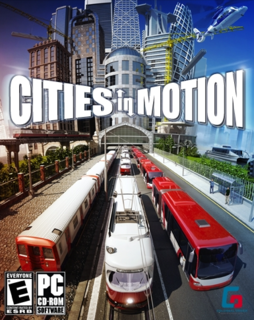A steep learning curve coupled with some obvious flaws almost obscure just how good this game is.
The in-game economy is also far too erratic, with prices for tracks, stops and vehicles jumping all over the board, fuel prices going from sky-high to rock-bottom month-to-month. The biggest impact this has on you as a player is your ticket prices. What is considered by passengers one month to be a great deal could easily turn out to be ludicrously expensive the next. With no way for the game to automatically adjust ticket prices to keep them within a certain level of acceptability, it can mean the difference between boom or bust, especially on the first level.
The biggest flaw with CiM is likely the learning curve, helped in no small part by its torturous first level and some sadistic traffic algorithms. Berlin in the 20s sounds like a good place to start, but even on easy, you will find yourself drowning in debts and restarting many, many times before learning just how this beast is handled. This is likely due to the traffic in-game. At the very start of the game traffic is light and you start laying down bus routes and tram lines with abandon. Everything's going fine, but suddenly the traffic goes from Sunday drive to gridlock across almost the entire map, which firstly mystifies, as hardly anyone owned a car in the 20s, evidencing a slight continuity flaw. With buses and trams (on roads) stuck in traffic, passengers go from placid to angry, lowering your reputation. The problem is firstly, that transport stops lend directly to the congestion problem. Bus stops do not cut into pavements, allowing traffic to pass, there are no extra bus or tram lanes, even on larger streets, and no priority seems to be given to public transport over private motorists, so adding extra buses and trams onto a line to relieve the problem only adds to it. The algorithms themselves are unforgiving, with traffic slow to correct itself, and sometimes it is a better idea to forego any street usage within the city.
Laying down routes and networks, planning the connection of neighbourhoods and major transport hubs is great fun, with the tracks versatile (although some seemingly obvious junction pieces are not allowed. With trams this means forcing you to contort your track into vomit-inducing slaloms to get where you want to go. With metro, the lack of a true Y-junction is an unnecessary annoyance), and the route planner is simple yet effective.
I've spent much of this review pointing out the game's flaws, but despite them, this is still a fun game, and at some point a few hours after first picking it up, the game will suddenly click for you, and the bank balance should start to look a whole lot healthier. When it does, you're then free to play around more with the game, rather than having to worry about whether three or four buses on a line is the best way to go, and the game really starts to open up for you.
This is an incredibly good first iteration of a game series, and I look forward to a sequel that, rather than focusing on adding lots of extra stuff, really tunes up the core game and fixes the weak points; the development team have been extremely good so far in taking up people's comments and ideas, so it's looking promising that future patches will address certain issues. I certainly hope they continue to support and nurture this game, as it could turn out to be a slow-burning hit.

